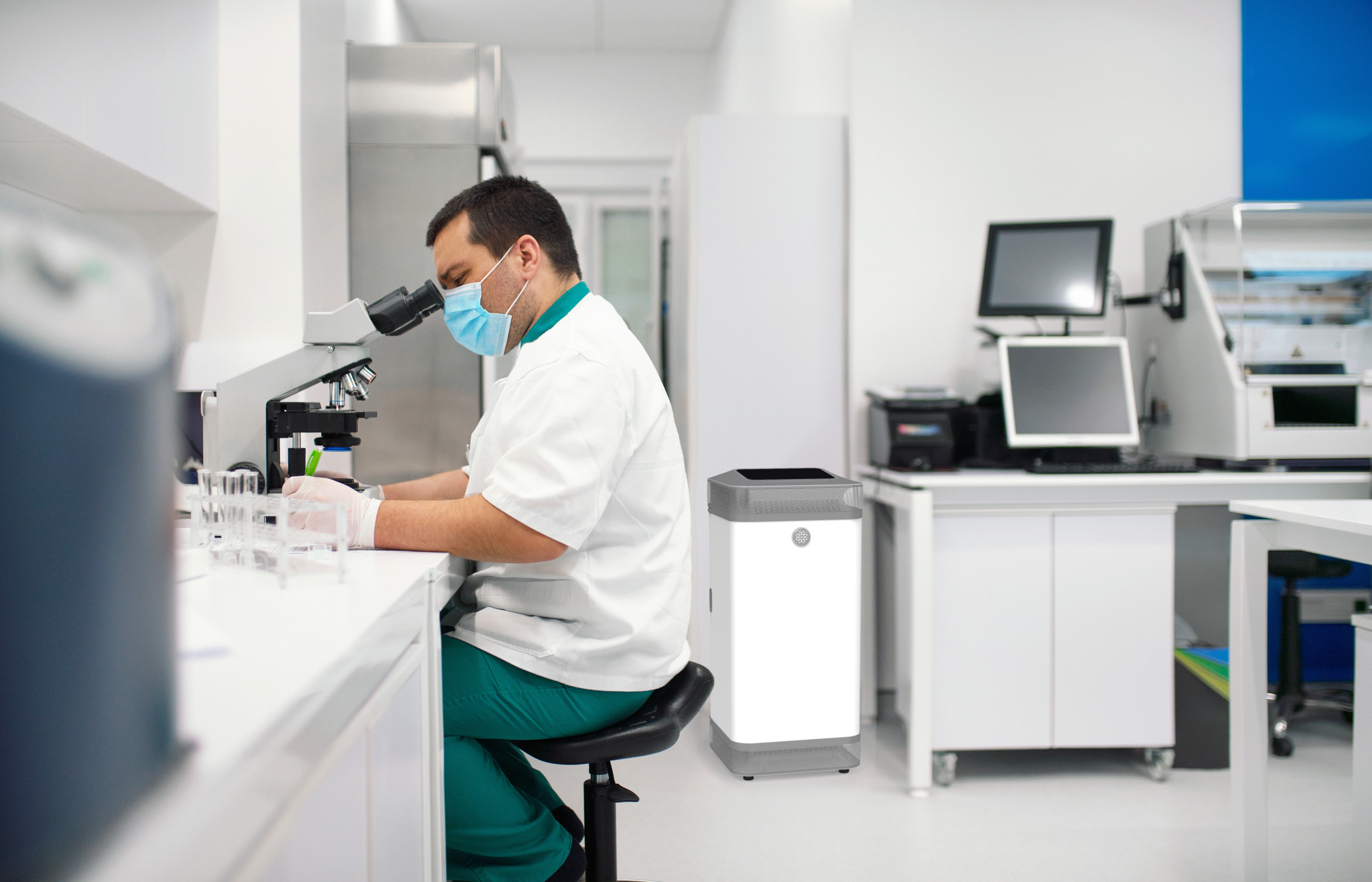In vitro fertilization labs
Improve embryonic development
Reduce airborne pollutants inside in vitro fertilization labs
Even when IVF labs follow strict laboratory practices, airborne pathogens can negatively affect embryonic development. Indoor contaminants such as VOCs and microbes, and outside air pollution from road work, traffic, construction and insecticides can all lead to fluctuations in IVF success. Pollutants can settle on surfaces and dissolve into the aqueous solutions and oil overlays where fragile embryos are cultured.
Neutralize VOCs before and after they settle on surfaces
Augment HVAC systems with portable high-performance HEPA filtration
Safely inactivate airborne and surface bacteria without chemicals
Air disinfection for healthcare environments
Wherever people are coming and going, pathogens and pollutants are being introduced to the indoor environment. WellAir's portable air disinfection devices and air cleaning systems use our patented NanoStrikeTM Technology to inactivate aerosolized viruses, bacteria, and fungi. Our Defend range of FDA-cleared 510(k) Class II medical devices combines our powerful NanoStrike Technology with a triple-stage filtration system. These devices not only inactivate pathogens but clear the air of pollutants such as pollen, particulate matter (PM), volatile organic compounds (VOCs), gases, chemicals, and odors.
UVC surface disinfection for healthcare environments
NuvaWave puts the power of hospital-grade surface disinfection in the palm of your hand. It is an instant UVC device proven to disinfect surfaces against deadly pathogens in one second with its targeted UVC light and portable, handheld design. NuvaWave is designed to be safe, fighting pathogens without needing to clear the room of patients and staff.



